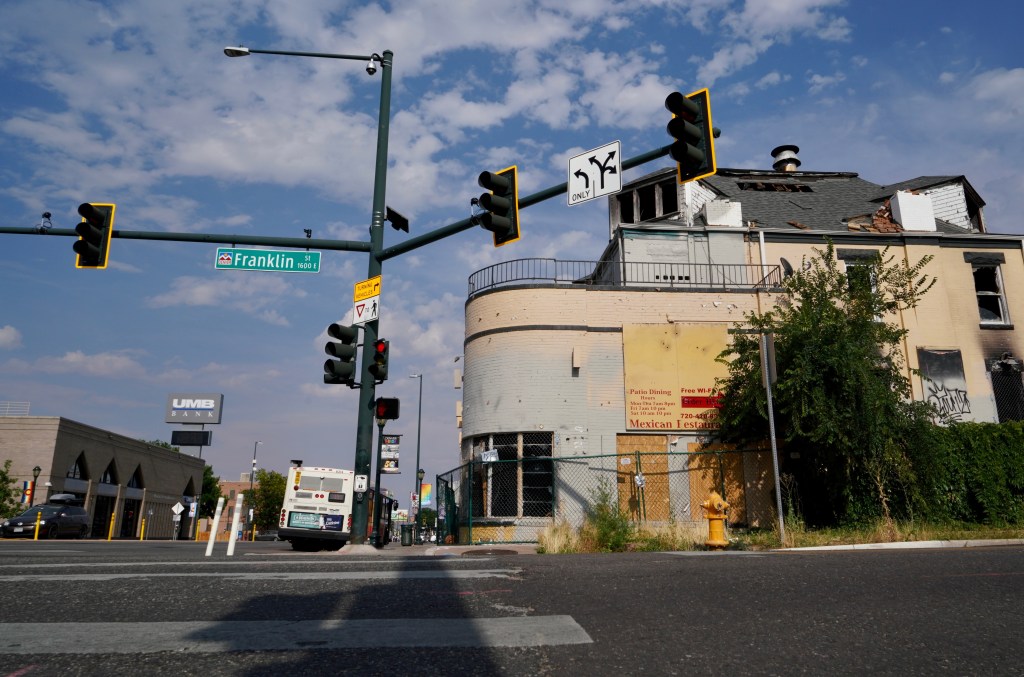On July 29, the Denver Post Editorial board published an opinion piece about the two former mansion homes at 1600 and 1618 East Colfax.
They were referred to as “Frankenstein Mansions.” This came six days after an article by Elizabeth Hernandez labeled them an “eyesore” in the opening headline. This is strong language and, in an era of strong language, it is important to consider the issues at play that have led us to this point. The buildings have undeniably seen better days, but their current situation is a product of context.
That context starts with the buildings’ historical status. Both are designated as “character contributing” structures within the Wyman Historic District. This means that a property owner cannot demolish or dramatically modify the exterior appearance without approval from the city.
Those supportive of retaining historic buildings are often accused of being reactive and of popping up at the last minute. On the contrary, the Wyman district was created by city council in 1993 so the current legal framework and presumption in favor of preservation has been in place for 31 years. The current landowner, Pando Holdings, purchased the site in 2017.
The news article notes that the developer bought the buildings with plans to demolish them, and this is now being thwarted by the city. This is not the full story. It is true that Pando purchased the buildings with a plan to demolish them. However, after making that intention public, local community groups pushed back. As a result, Pando dropped its demolition plan in 2018 and instead sought approval from the city to restore the existing buildings and construct seven stories of new homes in the parking lot to the rear. The city’s online portal shows that the permit for this plan is approved pending payment.
In March 2024, a fire ripped through 1600 Colfax, the former home of the architect who designed East High School. Three months later, Pando sought approval from the city to demolish both buildings. When questioned at the public hearing, it transpired that the buildings were not insured.
Another dimension to the context the historic buildings now find themselves in is the assertion by Pando that the combination of the Covid-19 virus, city permitting timescales, and current economic conditions have created a perfect storm, complicating their development plans.
These factors are well-documented and difficult to disagree with.
What’s more, the patience of the local community is fading as the – now – dilapidated buildings attract antisocial behavior. Would the situation be different had the developers implemented their community-supported plan when it was agreed on six years ago? We shall never know. What is known in the development industry is that time creates uncertainty and uncertainty costs money – and lack of money is why we are all in this predicament.
And so here we are, arguing about the future of two historic but dilapidated buildings on one of the most prominent intersections in Denver. Good things happen when people talk to each other, and Historic Denver is hopeful that a recent meeting held with Pando and local stakeholders will be the start of a dialogue to create a design that retains a large portion of the existing buildings’ fabric within a new development.
Historic Denver has a track record in working with private partners to reach win-win solutions. The format of this particular solution will ultimately be up to the city but, instead of trying to discredit the historical significance of the buildings and paint preservationists as the enemy, let’s acknowledge the context and move forward together to achieve an outcome that works for all parties.
Let’s also learn from this. In a city as young as Denver, historic buildings are precious commodities that should flourish with age, instead of being allowed to wither on the vine.
John Deffenbaugh is the president and CEO of Historic Denver.
Sign up for Sound Off to get a weekly roundup of our columns, editorials and more.
To send a letter to the editor about this article, submit online or check out our guidelines for how to submit by email or mail.
